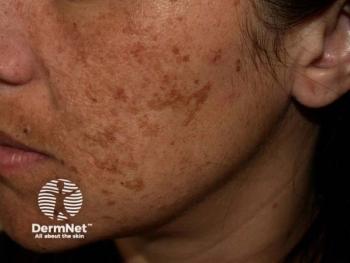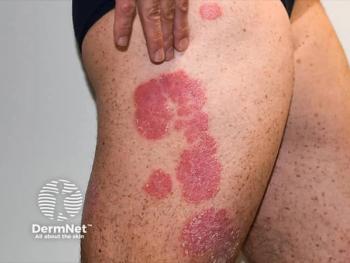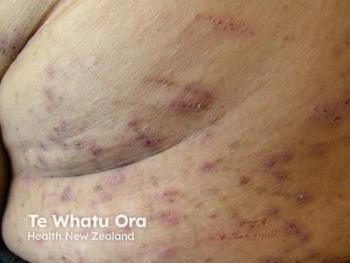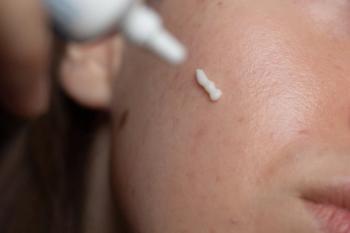
Women Have Higher Levels of Work and Life Burden Due to Dermatological Conditions Versus Men
Key Takeaways
- Dermatological diseases more severely affect women's work performance and daily activities compared to men, with higher absenteeism and work impairment observed in females.
- The study utilized self-reported surveys and physical examinations to assess the impact of skin conditions on employed patients, revealing significant gender differences.
New research highlights the significant impact of dermatological diseases on work-life balance, revealing greater burdens for women compared to men.
New data has explored how dermatological diseases impact work and home life in patients of each gender.1 It was found that these conditions affect job performance, productivity, and daily activities more heavily in women than in men. Previous research has inferred that skin structure and physiology, sex hormones, ethnicity, cultural behaviors, and environmental influences may all contribute to differences in skin diseases between genders.2
“The study aims to raise awareness among employers and occupational health physicians regarding the detrimental effects of dermatological conditions on the work capabilities of affected individuals,” the authors wrote.
A cross-sectional analysis was conducted between September 2021 and November 2023 at the Department of Dermatology of the University of Pisa. Employed white- and blue-collar dermatology patients in Italy completed a self-reported 27-question survey, consisting of the Dermatological Diseases Work Impact Questionnaire (2DWIQ), the Work Ability Score (WAS), and the Work Productivity and Activity Impairment questionnaire. The 2DWIQ assessed disease impact on a scale from 2 to 28, with lower numbers indicating mild impact and higher numbers signifying severe impact. A physical examination was also conducted.
Of these adult participants, 231 were men (mean age: 45.9 years) and 186 were women (mean age: 43.87). The primary included diseases were atopic dermatitis (AD), psoriasis, hidradenitis suppurativa (HS), non-melanoma skin cancer, and acne. The hand and face regions were affected in 238 of the surveyors. Most of the patients were being treated with biologic therapies. In the white-collar category, about half of males and females were office clerks. In the blue-collar category, 41% of men were craft workers and 38% of women worked in sales.
Diseases had a greater impact on women’s work and daily lives, based on average 2DWIQ scores in particular (p = 0.030). Females had higher levels of absenteeism, work, and activity impairment compared to men. Although both genders had moderate work ability, women had lower WAS scores (p = 0.012). The investigators noted that women often experience greater psychological and functional impairment due to more emotional distress, societal pressure, and concerns about body image.
In both sexes, dermatological conditions impacted non-work activities more than work-related ones. Women had significantly higher negative impact values for non-work factors, as high as ≥ 20%. Psoriasis, seborrheic dermatitis, and lichen had differing associations with male and female patients, “emphasizing the need for tailored work-related accommodation based on disease type and patient characteristics,” according to the authors. Psoriasis and seborrheic dermatitis were linked more to males, while lichen was more commonly associated with females. HS had the highest levels of impairment regarding quality of life, especially in female patients.
Several limitations may exist in this literature, including the study’s cross-sectional design, use of a single university center, and the lack of a control group. This made it unable to establish causal relationships between the diseases and their impact on work activities. Future research can address this while also including a wider spectrum of dermatological conditions and comorbidities.
With these findings, employers can become more aware of dermatological disease burden in their workers and advocate for interventions that support equitable work environments for all genders.
“Gender-specific interventions are crucial to reducing the physical and psychological burden of these conditions and improving occupational health management,” the authors concluded.
References
1.Padovan M, Benincasa BB, Panduri S, et al. Assessing the burden of dermatological diseases on work life from a gender perspective. Sci Rep. 2025;15(1):24014. Published 2025 Jul 5. doi:10.1038/s41598-025-07804-x
2. Chen W, Mempel M, Traidl-Hofmann C, Al Khusaei S, Ring J. Gender aspects in skin diseases. J Eur Acad Dermatol Venereol. 2010;24(12):1378-1385. doi:10.1111/j.1468-3083.2010.03668.x
Newsletter
Like what you’re reading? Subscribe to Dermatology Times for weekly updates on therapies, innovations, and real-world practice tips.


















